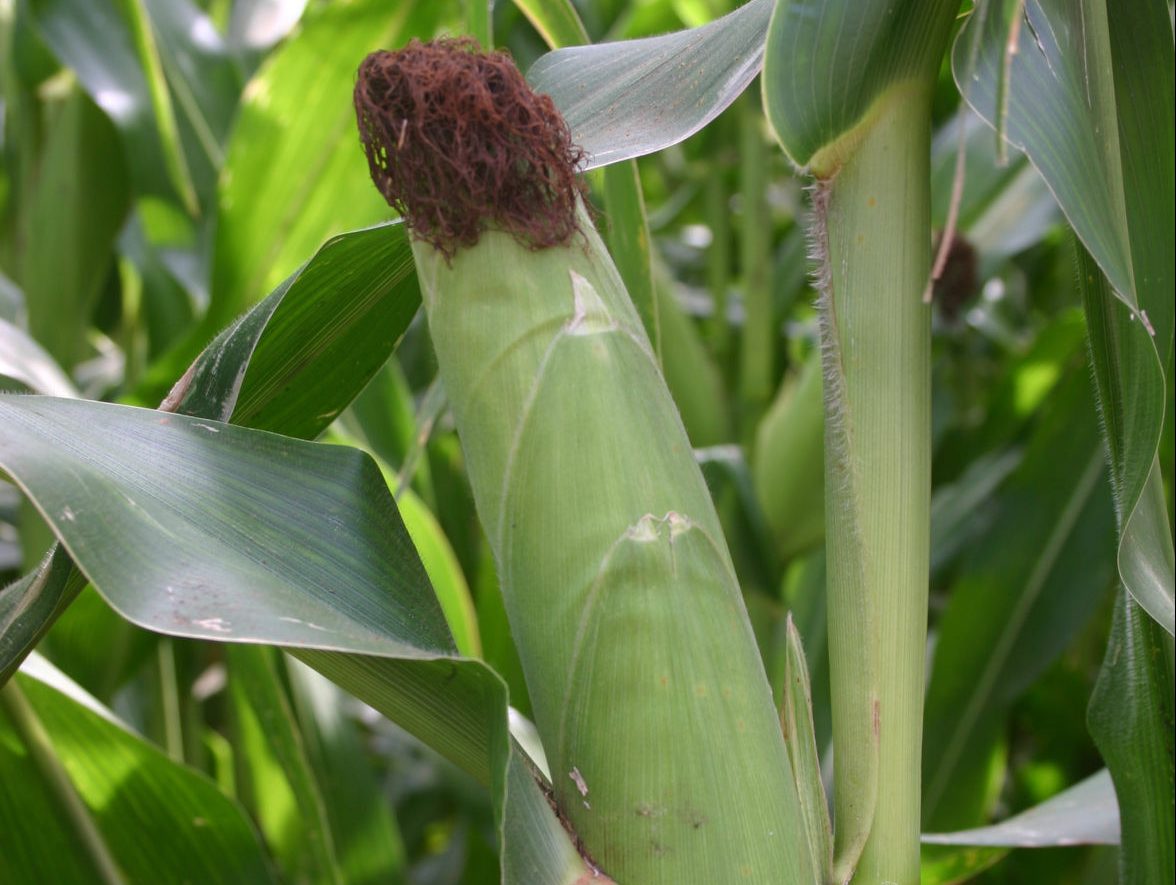Cool weather and some recent rains from swift-moving erratic storms helped boost corn yields for states in the lower two-thirds of the country, while heavy producers North Dakota, South Dakota and Minnesota saw dry weather continue and projected corn yields decrease in the latest World Agricultural Supply and Demand Estimates released by the United States Department of Agriculture.
Corn beginning stocks were lowered by 50 million bushels, as greater feed and residual use for 2022-23 more than offsets reductions in corn used for ethanol and exports. Corn production for 2023-24 was forecast up 55 million bushels as greater planted and harvested area from the June 30 Acreage report was partially offset by a 4-bushel reduction in yield to 177.5 bushels per acre.
According to data from the National Centers for Environmental Information, harvested-area-weighted June precipitation data for the major Corn Belt states represented an “extreme downward deviation from average,” although later cool weather and some rain moderated the effects. For much of the corn crop, the critical pollination period will be in the coming weeks. With supply rising fractionally and use unchanged, ending stocks were up 5 million bushels.
Demand headwinds
Analysts at Advance Trading Inc. noted “demand headwinds” for both corn and soybeans, citing the record Brazilian corn crop, the continued strong U.S. dollar and inflation. ATI expert Brian Basting referred to the “high prices cure high prices” syndrome.
Major global trade changes for corn for 2023-24 included larger corn exports for Ukraine, with greater imports for the EU. For 2022-23 corn exports were higher for Brazil by about 1 million bushels, but were lowered by the same amount for Argentina, which has been experiencing drought. Corn exports were raised for Ukraine, Russia, and the EU but reduced for the U.S. and India. Foreign corn ending stocks were virtually unchanged relative to last month. Global corn stocks, at 314.1 million tons, were up 0.1 million.
Soybean yields unchanged
The soybean yield forecast was unchanged at 52 bushels per acre. With lower production partly offset by higher beginning stocks, 2023-24 soybean supplies were reduced by 185 million bushels.
U.S. oilseed production for 2023-24 was projected at 127.6 million tons, down 5.6 million tons from June with reductions for soybeans and sunflower seed, partly offset by higher canola and peanuts. Soybean production was projected at 4.3 billion bushels, down 210 million on a lower harvested area. Which was forecast at 83.5 million acres in the June 30 acreage report but is down 4.0 million from last month.
Soybean crush was reduced 10 million bushels, reflecting a lower “soybean meal domestic disappearance forecast.” Soybean exports were reduced 125 million bushels to 1.85 billion on lower U.S. supplies and lower global imports. With lower supplies only partly offset by reduced use, ending stocks for 2023-24 were projected at 300 million bushels, down 50 million from last month.
The Environmental Protection Agency released its final renewable fuels standards rule for 2023, 2024, and 2025. The 2023 biomass-based diesel volume mandate was unchanged from the proposal published last December. For 2024, EPA increased the non-cellulosic advanced biofuel volume mandate but lowered the implied conventional volume.
The renewable fuels industry has been protesting the failure of EPA’s mandates to keep up with increased production. The WASDE noted that “USDA assumes that biomass-based diesel would be produced in excess of the advanced biofuel volume mandate to make up the shortfall in conventional renewable fuel to meet the total renewable fuel obligation.” With the offsetting changes compared to the proposal in 2024, there was no change to soybean oil used for biofuel for 2023-24 this month.
Foreign oilseed production was increased by 1.5 million tons to 539.7 million on higher sunflower seed, soybean, and canola production. Sunflower seed and canola production estimates were raised for Ukraine, reflecting a higher area in government planting progress reports.
The global soybean trade for 2023-24 was down 3.1 million tons to 169.3 million, as reduced U.S. exports were paired with lower imports for China, Egypt, Bangladesh, Pakistan, Turkey, and Thailand. China’s imports were lowered by 1 million tons to 99.0 million, due to higher carry-in supplies from increased imports in the prior marketing year. Global soybean ending stocks were reduced 2.4 million tons to 121 million, mainly on lower U.S. stocks.
Wheat uncertainty
The cool weather helped revive some of the wheat crop as well, with the percentage of forecast good-to-excellent wheat rising from June estimates to the 40% range—still below average, but better than previously forecast. The Black Sea grain initiative expires July 17, with uncertainty about whether Russia will continue to allow exports from Ukraine.
Wheat supplies were raised on larger production, which is up 74 million bushels to 1,739 million bushels, on higher harvested area and yields. The first 2023-24 survey-based production forecast for other spring and Durum indicates a decrease from last year.
Conversely, winter wheat production was forecast higher on larger harvested area and higher yields. Gains for all wheat production were partly offset by smaller beginning stocks, which were lowered 18 million bushels to 580 million as indicated in the Grain Stocks report, issued June 30.
The 2023-24 ending stocks were forecast at 592 million bushels, 30 million higher than last month.
David Murray can be reached at [email protected].




